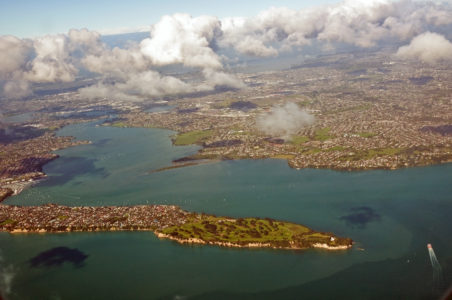
Local historian Alan La Roche continues his series marking the district’s 170th anniversary this year.
To communicate, Maori used gongs from the top of their pa sites such as on the top of Ohuiarangi-Pigeon Mountain.
The gong was a suspended slab of wood or a hollow log hit with a stout wooden club. This was used as an alarm to those working on agricultural plots or fishing nearby. The sound of a gong could be heard several miles away.
When the first European settlers or Fencibles arrived in Howick in 1847, they were very disappointed at the barren treeless hills which were 15 miles from Auckland with no road. Few Fencibles could afford to travel to Auckland by the ferry.
A few years later the Anglican vicar Rev Vicesimus Lush complained that it took him seven hours to reach Auckland with his horse and cart, which included crossing the Tamaki River on the punt. Even in 1900, Howick horse-buses took 3.5 hours to Auckland. The early settlers felt abandoned at Howick but no one took any notice of complaints, and some said “half a loaf was better than no loaf” and accepted their lot. Letters sent to the Governor were free of postage charges.
The Fencibles’ 10 hour working day started at 6am with a bugle call, sometimes using an adapted cow’s horn. There was no town clock and few had watches so the bugle or school bells were the time-keepers. The Fencibles had their own newspaper, called The Pensioner’s Gazette started in 1848 and produced by Dr Bacot, who lived in Bleakhouse Road, and Sgt Ford at Panmure. They criticised the Governor in late 1849 so were prohibited from publishing.
From 1849 to 1857, Ngamapu – the Maori mail-runner – ran barefoot to Auckland twice a week, returning on Wednesday and Saturdays taking 4.25 hours over the swamps of Pakuranga and scoria road up to Remuera and on to Auckland. Ngamapu lived next door to Howick’s first postmaster Fencible James White’s cottage in Elliot Street. Until 1862, it was the receiver of letters who paid the postage, not the sender of mail as it is today.
In 1863, all men aged 16 years to 45 years had to enroll for military duties during the Waikato War and the Stockade was built on Stockade Hill. Semaphores were used to communicate from Howick Stockade with the Otahuhu Camp and Panmure Stockade, above the Panmure punt. Semaphores used mechanical arms of wood on a pole or post with pre-arranged coded messages.
The first telephones arrived in Howick in 1909, although Auckland had had telephones for many years. Crawford’s Howick buses had the telephone number “1”. The telephone lines were initially a single wire on the top of a pole wound onto a single insulator.
Whitford had a pigeon-post service from Newton Road, Auckland to Nathan’s Ostrich Farm, Whitford. They even heard the Boer War news by pigeon post. Teacher Mr Judkins at Howick School taught his pupils to make crystal radio sets, even making their own crystals in the 1920s.
In World War II, during blackouts, members of the Boy Scouts and Girl Guides delivered messages by bicycles without torches at night.
An automatic telephone exchange, then cell phones which take photos or emails, or ‘apps’ are today’s wonderful connections.
- Alan La Roche, Howick Historian






